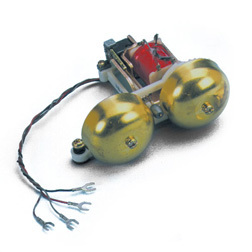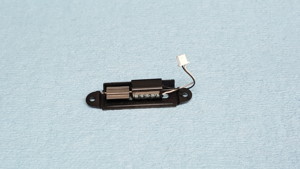by Charles Patterson, TSCM Specialist
A very real eavesdropping threat from the past is resurfacing. “Microphonic ringer” was a vulnerability that existed in many older model telephone sets (“2500” series for example). The ringer in these phones was actually created by a coil of wire (similar to what is used in dynamic microphones) that was attached to a small rod with a clacker (metal weight) on the end. When the ringing voltage on the phone line reached the coil it acted like an electro-magnet and the clacker would move back and forth striking the bell ringers.

Standard “2500” model phone set.
The bugging threat in some of these phones was that the ringer coils could pick up audio vibration from sound in the room, that would in turn create a small voltage on the line which fluctuated according to the sound. (That is basically the definition of a microphone- audio turned into small voltages on a wire.) The eavesdropper could tap into the phone wire anywhere along it’s route and listen in to room conversations without ever needing access to the room or the phone equipment.

Mechanical phone ringer and other motors can act as microphones.
A few years ago we were performing an inspection in a metropolitan office building with a modern digital phone system. During the standard “old fashioned” analog testing of phone lines we found audio from the CEO’s office on one phone wire pair in a wiring closet on a completely different floor. It turned out that the wire was not part of their digital phone system but rather was connected to an analog phone that was stored in a cabinet behind the CEO’s desk. It was an old reliable “2500” model phone that was there only to be used as a backup phone in case of power failure. The ringer in the phone exhibited the microphonic properties and ended up sending room audio down the line throughout the building.
The threat of audio vibrations being reconstructed is not limited to motors. Areas of concern include air ducts, pipes, paging speakers, alarm enunciators, and more. They all have the potential of being used for eavesdropping and should be checked. Contact microphones and sensitive audio amplifiers are standard components of a TSCM tool kit.

Miniature vibration motor.
Researchers at the University of Illinois have recently reported that they can accomplish a similar feat by recording the voltages present on the small vibration motors that exist in many high tech devices. Phones, toys, watches, and many IoT (Internet of Things) devices all may contain vibration motors. Of course, you need access to the motor to be able to monitor the voltage, so phones and watches may not be that susceptible to covert monitoring, but with new devices appearing everyday, the old threat of picking up good vibrations could be making a comeback.
When protecting against surveillance and eavesdropping, old bugging techniques still pose a threat. A good TSCM firm will be aware of concerns both old and new and help provide the protection you need. Let us know if we can help secure your facilities.
